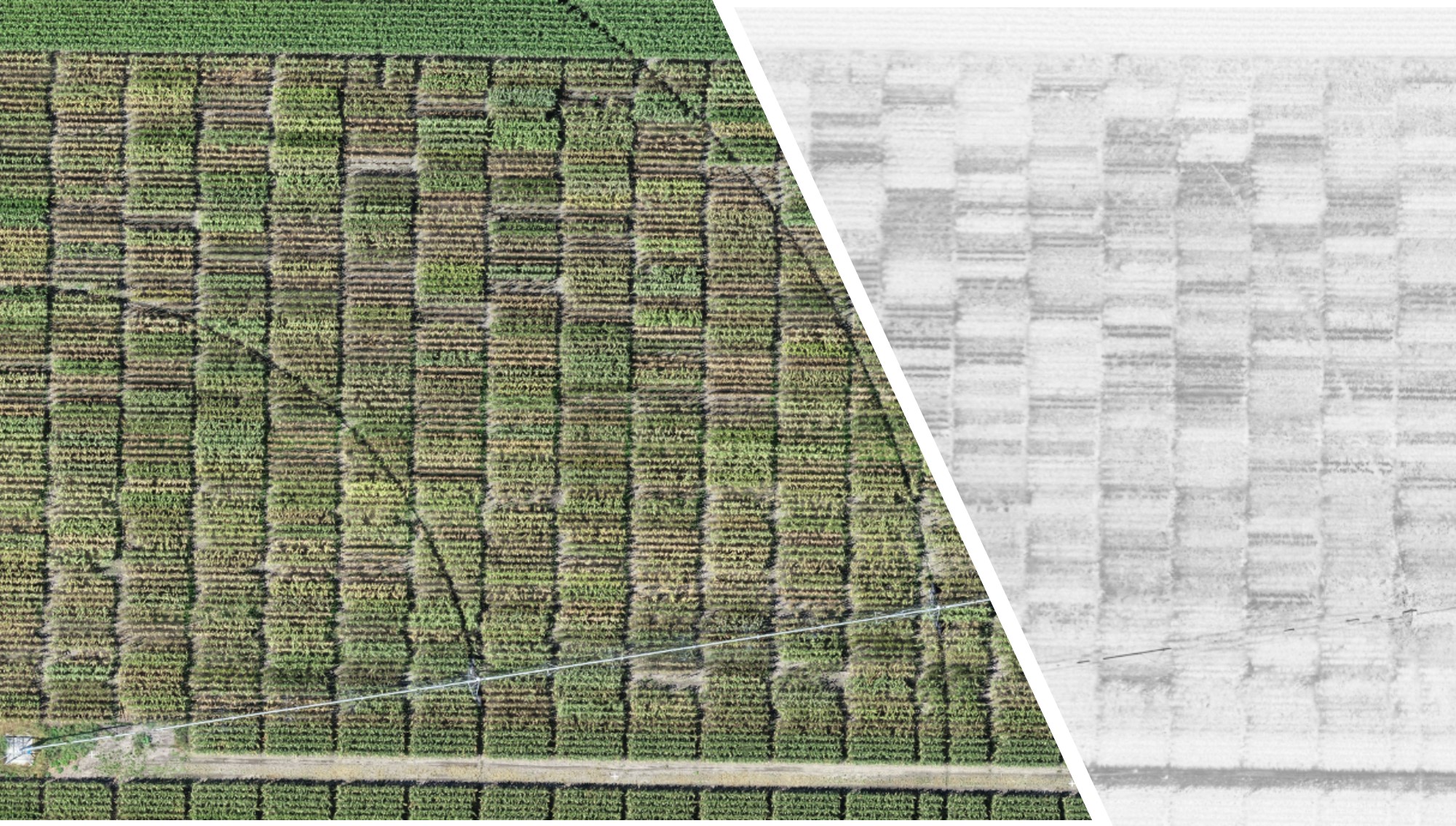These are the main areas of research in the Thompson Lab at Michigan State University:
Quantitative Genetics
At the heart of most of the questions we ask is a drive to understand how the differences in genetic sequences observed between different varieties affect their phenotypes, or physical characteristics. These characteristics may be easily visible (e.g. plant height, flowering time), more complex to describe (e.g. canopy structure, leaf or seed size and shape), apparent only over time (e.g. growth rate, canopy closure) or in certain environments (e.g. drought response, nutrient deficiency), or even invisible to the naked eye (e.g. hyperspectral reflectance and transmittance, chemical composition). Our lab seeks to map and identify candiate genes affecting key traits in maize (and sorghum) that impact yield and biomass, as well as using crop growth modeling and statistics to predict and dissect the interaction of genotypes in diverse environments.
One of the applications of this research is our current project on isolating and pre-breeding resistance to tar spot, a new disease in maize.
High Throughoupt Phenotyping
As our research in quantitative genetics relies on measuring the phenotypes of thousands of individuals and/or plots, we must have the ability to collect data accurately and efficiently within discrete time intervals. Working with computer scientists, engineers and other experts, we are innovating new approaches for data collection and analysis. Our projects here are at the intersection of computational and plant sciences, making them a good fit for the IMPACTS Program.

Miscellaneous Other Cool Science
We have several other projects, including nitrogen response in maize, breeding population optimization, and others. Read through the students’ pages to learn more about our diverse interests!